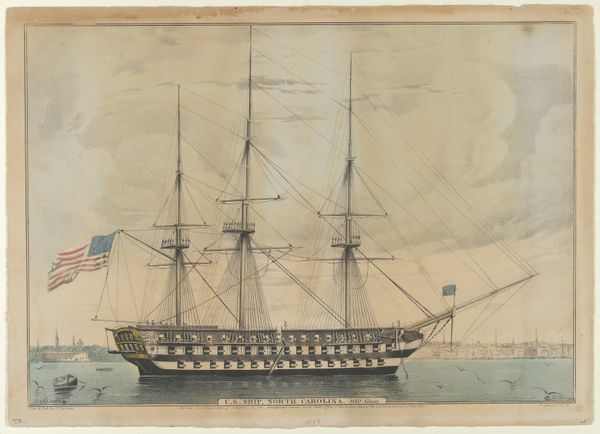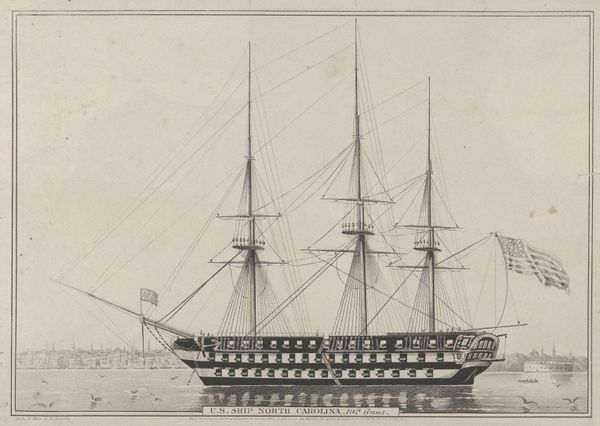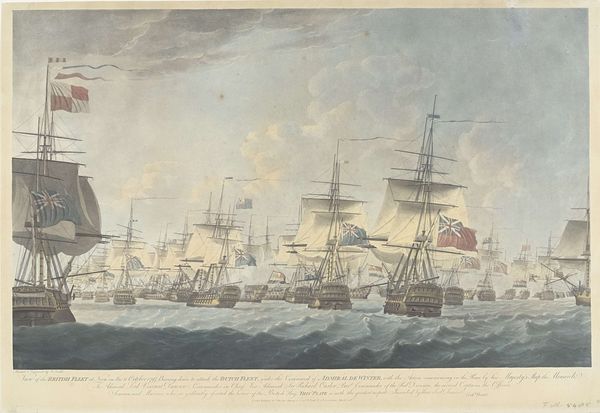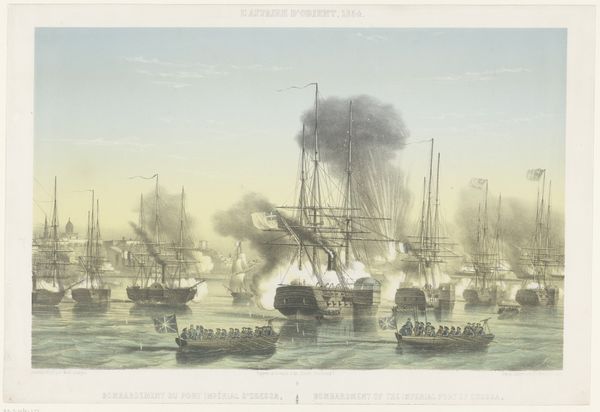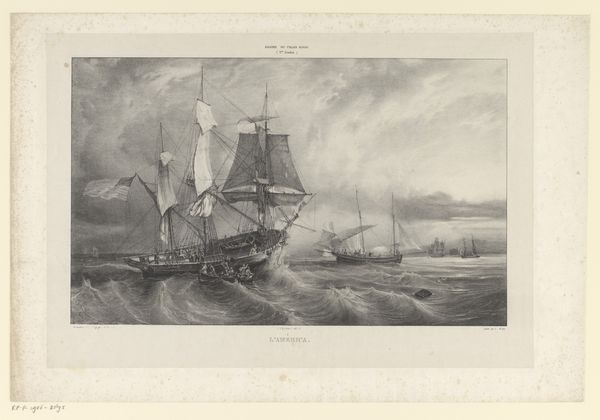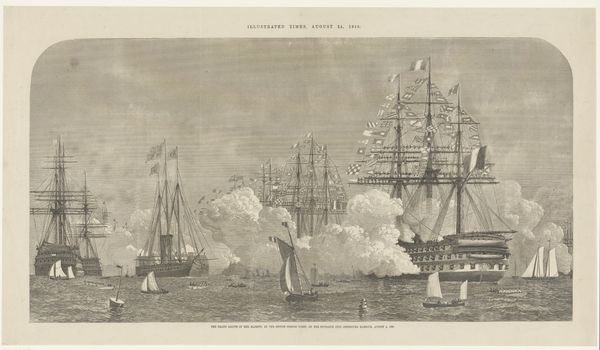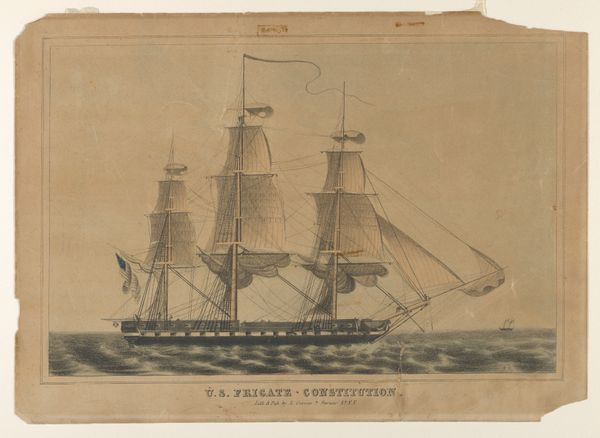
The Constitution and Guerriere–Fought August 19th, 1812–The The Guerriere had 15 men killed and 63 wounded–The Constitution had 7 men killed and 7 wounded 1848
0:00
0:00
drawing, lithograph, print
#
drawing
#
ink painting
#
lithograph
# print
#
pencil sketch
#
landscape
#
coloured pencil
#
genre-painting
#
history-painting
Dimensions: Image: 8 1/2 × 13 3/16 in. (21.6 × 33.5 cm) Sheet: 9 15/16 × 14 1/16 in. (25.3 × 35.7 cm)
Copyright: Public Domain
Editor: This lithograph by Nathaniel Currier from 1848, titled "The Constitution and Guerriere," depicts a naval battle, showing two ships engulfed in smoke and splintered masts. The energy is chaotic, violent, but there is also some excitement conveyed in the piece. How do you read this piece, especially considering its historical context? Curator: The power of this image lies in understanding its circulation within American society at the time. Currier prints, like this one, were immensely popular because they democratized art. This isn't high art displayed in a palace, but rather an affordable print distributed widely. It shaped public perception of historical events, specifically national pride. How does knowing that it was intended for mass consumption alter your view of its patriotic imagery? Editor: I suppose it makes the romanticized depiction of the battle make more sense. Was there much concern at the time about historical accuracy, or was the primary goal to stir emotions? Curator: The priority was certainly to promote a particular narrative. The print presents a heroic vision of American naval prowess, crucial for solidifying national identity during a period of significant political and social change. The glorification overshadows the human cost, right? The artist conveniently avoids illustrating dead and injured bodies on the boat, except those statistics listed in the subtitle. How would this image function differently if it had been a painting exhibited at the National Academy of Design? Editor: Interesting! I imagine the audience and reception would've been much different; less accessible. I’m definitely seeing a shift in how I think about art. Curator: Exactly! Recognizing its place within a larger system of cultural production transforms how we view the image.
Comments
No comments
Be the first to comment and join the conversation on the ultimate creative platform.
